Converting your NEW CONSTRUCTION vented crawlspace to a sealed crawlspace, affordably
For various reasons builders still build vented crawlspaces, yet have “sealed crawlspaces” under their own homes. Vented crawlspaces can work but it isn’t fantastic to have a crawlspace which allows dust/smoke, pollen/spores, hot/cold, wet/dry, light for critters to enter and thrive….
If you buy a new home in 2019 and it has a vented crawlspace with fiberglass batts in the floor-system, within about 5 years insulation will start to disintegrate and sag and become discolored due to air-infiltration which inasmuch as the wetness is accelerated by “refrigerating” or air-conditioning the home. If the air barrier is the sub-floor, and the thermal barrier is the floor system and you are conditioning your home you could very well be intentionally using a moisture sensitive assembly to stop moisture.
Theoretically it takes a while for a crawlspace to become funky when it is vented and doomed for failure. This is why people often seal them as soon as they take possession of vented crawlspaces. In a nutshell I highly recommend people in North Carolina install construction lights (because vent plugs make a dark crawlspace pitch-black, yikes!), vent-plugs, a sealed vapor barrier, an adjustable drying device, a sensor, and make sure it is reasonably air-tight. According to our chart it doesn’t take much drying force to solve the moisture problem and the thermal results are so good they are hard to believe. Just plugging the intentional foundation vents, adjusting the door, and sealing around the package unit is about 80% – maybe 90% of the moisture solution you could hope for with a sealed crawlspace. Vented is bad and a little air-sealing goes a long way.
The day after closing on the house SHS strung out some construction lights and sealed the vapor barrier & foundation from the ground & ambient moisture loads.
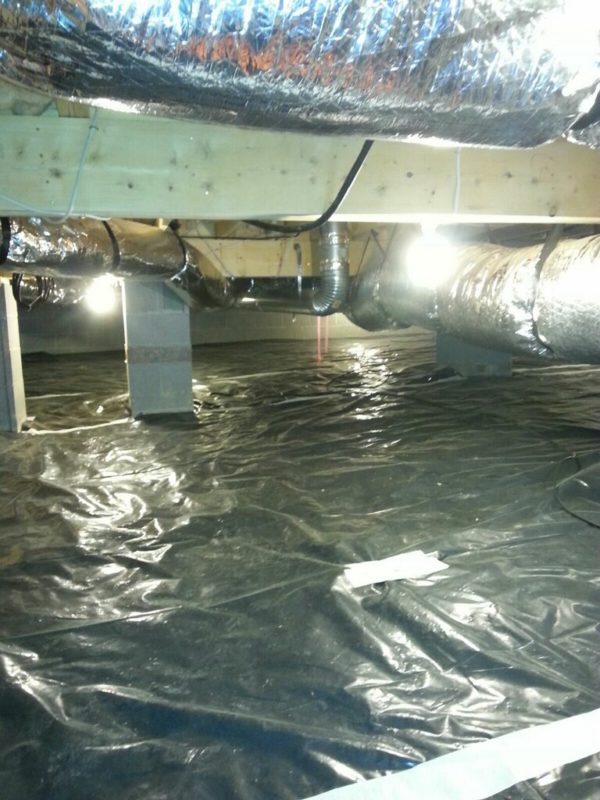
The day after closing, we “sealed the vapor barrier” to itself, with tape. The builder provided a 6 mil black plastic and the ground was decently flat and smooth – Excellent. Knowing the spray-foam crew is soon to arrive we did not seal the plastic to the piers or walls because this would be easier with a high-pressure closed-cell-spray-foam system.
We chose to provide a make-up air duct to the furnace, via a crawlspace vent. This setup makes sense, the furnace is now “inside” this super comfortable environment, it is a shame to exhaust this air, that never gets below 63 degrees Fahrenheit during the coldest months. We could have extended the PVC but it was about $250 more for that option. This provides more air for less investment.
Furnace Combustion Intake rough-in.

^ In this scenario the make-up air is NOT REQUIRED FOR CODE. The volume of this crawlspace was over double the volume required to consider this crawlspace as “unconfined”.
In the above situation the builder did not offer high-efficiency “2-pipe” / Sealed Combustion furnaces. The nice thing they did do was put one furnace in the crawlspace and one in the attic, allowing an “un-zoned” system. This passive make-up air system is actually very common and widely approved by building code inspectors in North Carolina. It is common in mechanical room situations.

After the foam crew was done we waited a few days and did an inspection. The Spray Foam Crew did a great job.
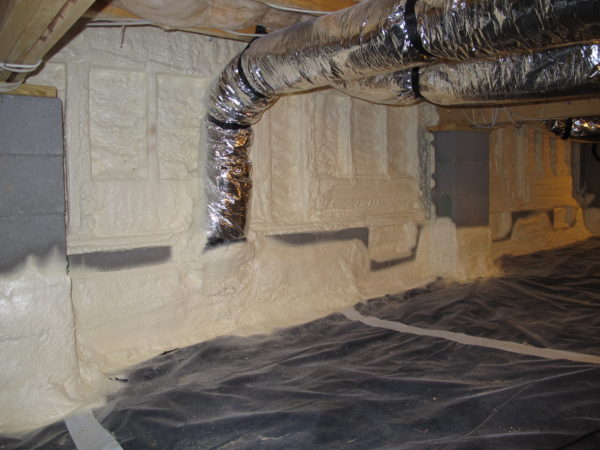
If possible, we would rather burn and expel “un-conditioned air”, so for good measure, even though it wasn’t required, we installed this basic system, carefully, to maximize efficiency without triggering a code inspection.
Here is an interesting link provided by the North Carolina Real Estate Commission regarding the need permitting for various projects in North Carolina.
The main takeaways are the $5,000 upper limit for un-permitted work, and the allowance of “minor improvements” to be made to Plumbing, Electrical, HVAC, and other systems in 1 and 2 family buildings without a permit as long as licensed contractors personally oversee the work.
Stetten Home Services employs only licensed, insured, trustworthy contractors. We by all means want to keep the costs of projects to a minimum and SAVE YOU MONEY!

But what happens when the builder provides a crawlspace without any ductwork inside to use for the drying purposes of a sealed crawlspace? Here is a link to the NC SEALED CRAWLSPACE CODE regarding the need for a drying mechanisms in sealed crawlspaces. See
You can bring a duct down from the upper floor system or wherever the air distribution in located:
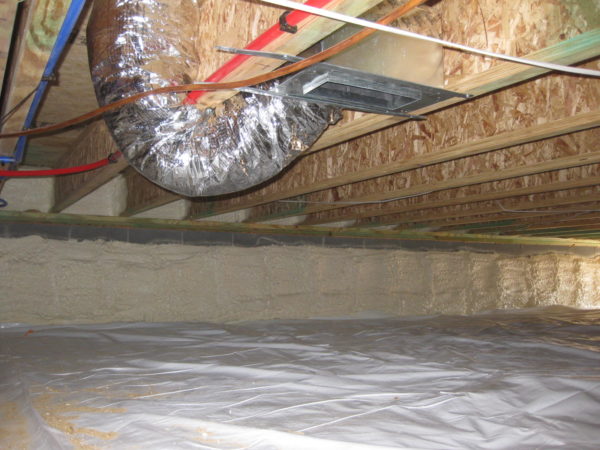

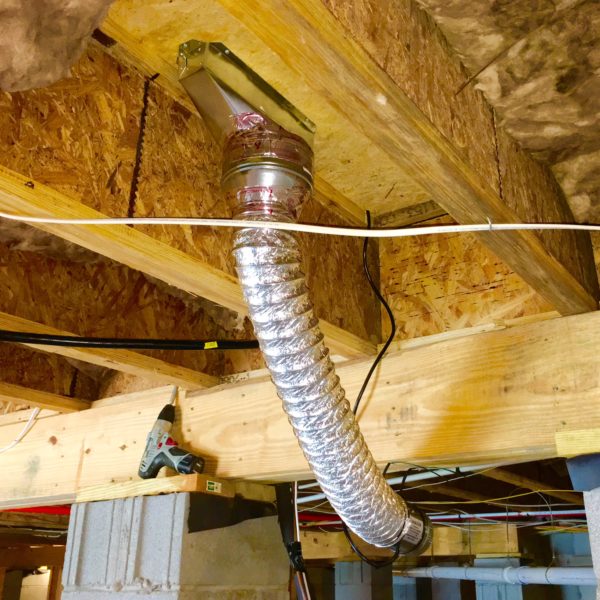
Alternatively, we can wire it so there is an outlet in the crawlspace, and put the sensor in the crawlspace, for example, if the home is tenant occupied and under a service contract, the service technician could access the sensor, determine that the crawlspace needed more/less air and adjust accordingly.
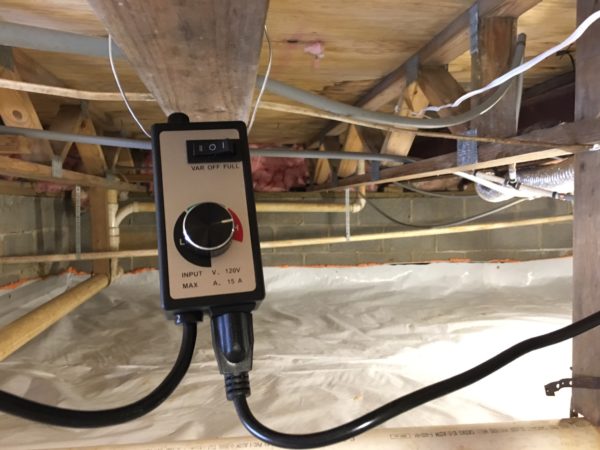
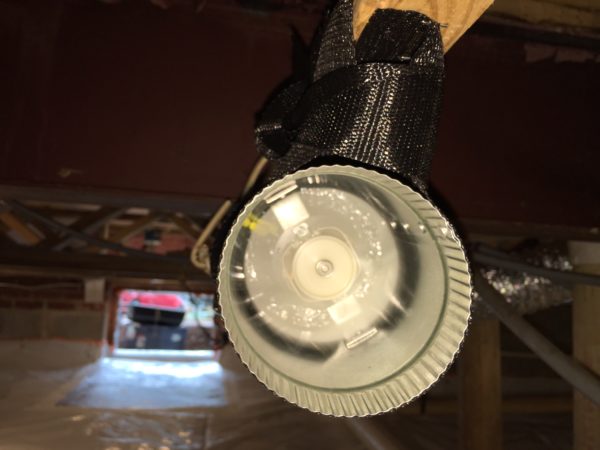
People in all industries are constantly up-selling their customers. I get it, there is no better way to generate revenue than with existing clients. Our strategy however is to up-sell you only when necessary to address additional issues. So we offer these innovative and cost effective strategies to convert your vented crawlspace to sealed, based on building codes, and local permitting requirements with hopes that the “bare minimum sealed crawlspace” with any of these drying mechanisms does not require a permit, and that the drying mechanism is adjustable and utilizing a monitor to be able to “dial back” the drying to what is required, if any, as opposed to some arbitrary amount which is exactly what you get from any contractor who is not discussing humidity monitoring. Code compliant lighting in crawlspaces is abysmal. You can build a 20,000 SF crawlspace, fill it with plumbing and electrical and hvac and install a single light. I do not believe upgrading the lighting in the crawlspace to fully illuminate it should require anything but store bought materials and some ingenuity. In fact the code should require some kind of crawlspace lighting with certain # of lumens every 15 feet for safety purposes. Everybody wins if all crawlspaces henceforth were well-lit and sealed to start with. Lets hope it becomes “standard” for all builders before they are mandated to do so.
Did you receive a quote from a crawlspace contractor with a DEHUMIDIFIER included? That means a new electrical line, a new drain line, and a permit is required. At what RH% does it shut off? At what RH does is turn on? Have you tested the humidity in the opposite corner? How long does a $2500 commercial dehum last? Do I need to change the filter? How often? Does it have a pump? Does it have a gravity drain? Does it have a float-switch? Bluetooth?
“Dehumidifiers” are horrible investments and often become heaters as things get gummed up and people use them incorrectly. A dehumidifier SHOULD require a permit because it is adding to the plug-load and the thermal load of the home due to the waste heat of the refrigeration process. Only 2 of our crawlspaces have dedicated dehumidifiers, and those folks have strange circumstances where the first floor essentially doesn’t run enough to make an impact on the crawlspace environment even with the adjustable drying mechanism wide open.
The best way to approach your vented crawlspace is to seal it up in the most conservative way possible and to do such a good job with the air-sealing that very little “drying” is needed.

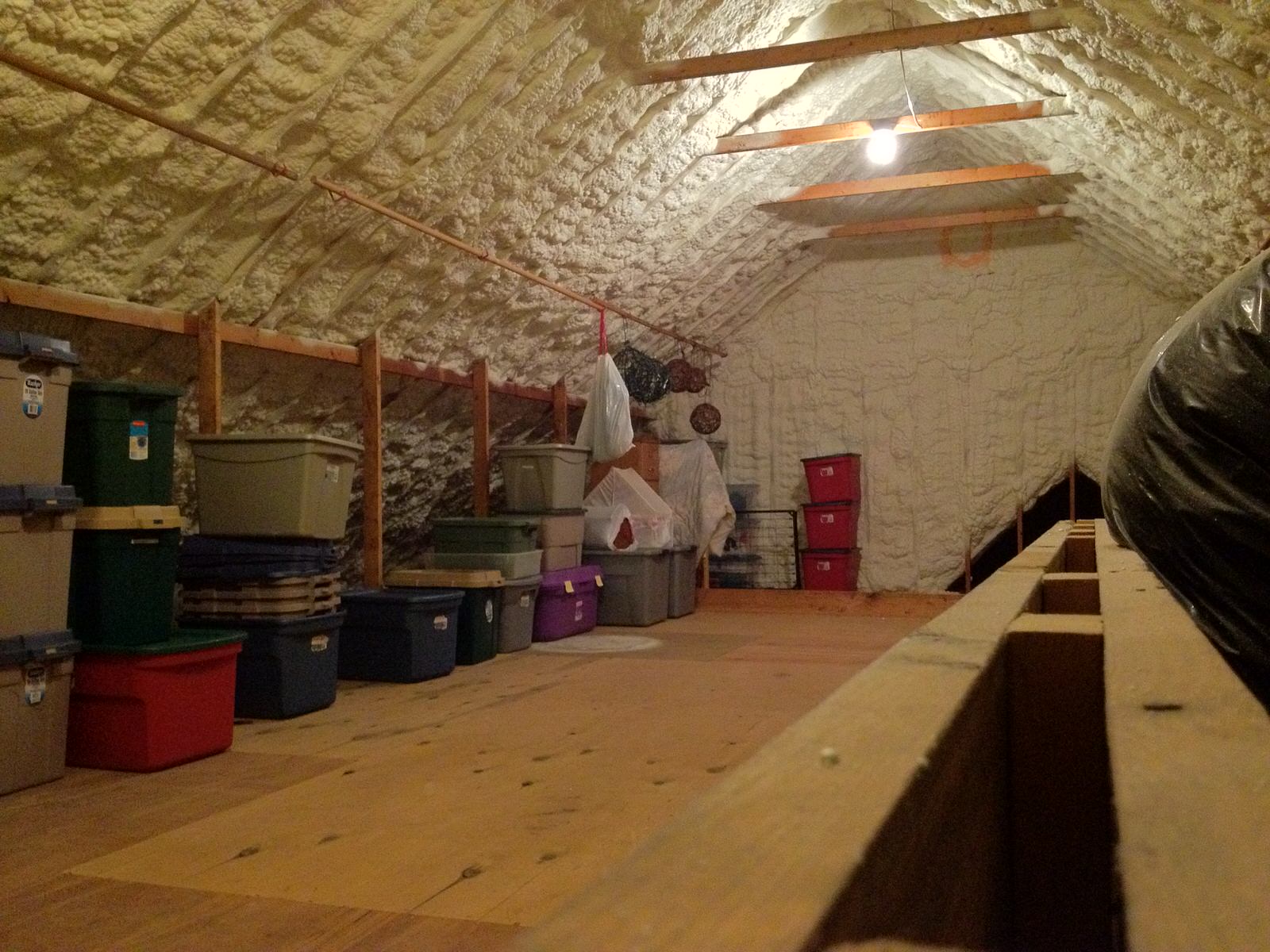


This is extremely helpful! Thank you!